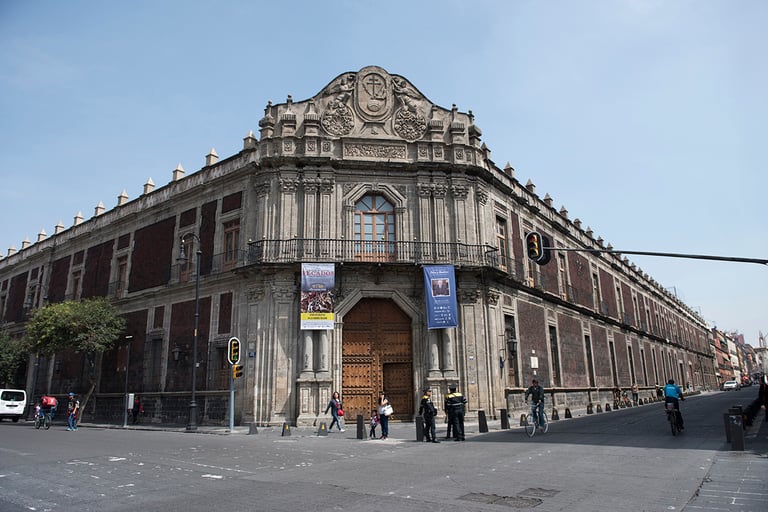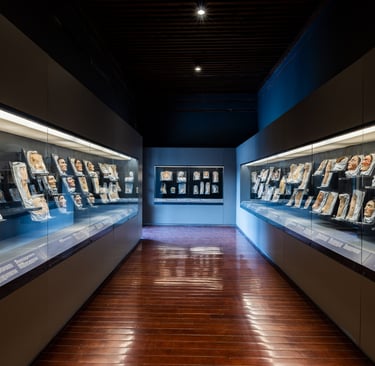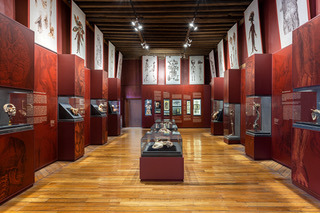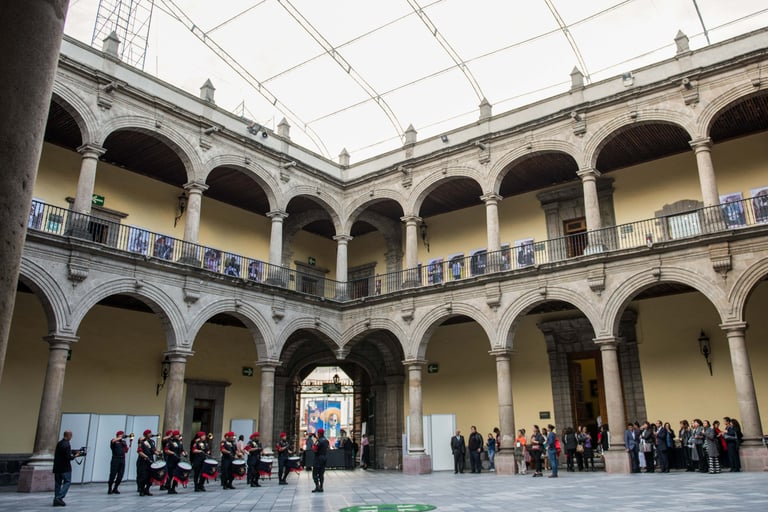The History of the Palace of the School of Medicine
The Palace of the School of Medicine is an emblematic building of the Faculty of Medicine of the National Autonomous University of Mexico (UNAM). In this wonderful baroque building you can find the 18 halls of the Museum of Mexican Medicine. It contains a vast collection of objects that belonged to the former National School of Medicine. The pieces allow us to reconstruct the history of medical sciences from the Pre-Hispanic era to the beginning of the 20th century. Fetuses, anatomical wax models, medical instruments, pharmacy jars, microscopes and plants preserved in glycerin are some of the pieces that you will discover inside the museum.
The building was built from 1732 to 1736 by the architect Pedro de Arrieta to house the Tribunal of the Holy Office of the Inquisition. Until 1820 it fulfilled its original function, and then it was uninhabited for a few months. During the first half of the 19th century, the building was divided up to house the offices of the National Lottery, a military barracks and school, a Lancasterian school, a temporary hall for the Senate of the Republic, among other instances. It was not until 1854 that the building was purchased by the medical community to establish the National School of Medicine. For more than 100 years, medical students walked the halls, dissected cadavers, attended the laboratories and lived on the premises as part of the University District. In 1956, the School of Medicine moved to the UNAM University City and the building underwent a restoration process that allowed it to open to the public on December 22, 1980 as the Museum of Mexican Medicine. Currently, in addition to the 18 rooms of the museum, the palace houses the Dr. Nicolás León Historical Library, the Historical Archive and the Department of History and Philosophy of Medicine. It is also a living space in which the university community participates.






El Palacio de la Escuela de Medicina es un emblemático edificio de la Facultad de Medicina de la Universidad Nacional Autónoma de México (UNAM). En este maravilloso edificio barroco podrás encontrar las 18 salas del Museo de la Medicina Mexicana. En ellas se contiene una vasta colección de objetos que pertenecieron a la Antigua Escuela Nacional de Medicina. Las piezas nos permiten reconstruir la historia de las ciencias medicas desde la época Prehispánica hasta principios del siglo XX. Fetos, modelos anatómicos en cera, instrumental médico, albarelos, microscopios y plantas conservadas en glicerina, son algunas de las piezas que descubrirás dentro del museo.
El edificio fue construido de 1732 a 1736 por el arquitecto Pedro de Arrieta para albergar el Tribunal del Santo Oficio de la Inquisición. Hasta 1820 cumplió con su función original, para después quedar deshabitado por unos meses. Durante la primera mitad del siglo XIX se fraccionó el espacio para contener las oficinas de la Lotería Nacional, un cuartel y escuela militar, una escuela Lancasteriana, una sala de sesiones para el Senado de la República, entre otros. No fue si no hasta 1854 que el edificio fue comprado por la comunidad médica para establecer la Escuela Nacional de Medicina. Por más de 100 años los alumnos de medicina recorrieron los pasillos, diseccionaron cadáveres, asistieron a los laboratorios y vivieron en el recinto como parte del Barrio Universitario. En 1956 se trasladó la Facultad de Medicina a Ciudad Universitaria y el edificio entre en un proceso de restauración que permitió que se abriera al público el 22 de diciembre de 1980 como el Museo de la Medicina Mexicana. Actualmente, además de las 18 salas del museo, el palacio alberga la Biblioteca Histórica Dr. Nicolás León, el Archivo Histórico y el Departamento de Historia y Filosofía de la Medicina. Así mismo, es un espacio vivo y en el cual participa la comunidad universitaria.
Descripción e historia del Palacio de la Escuerla de Medicina


